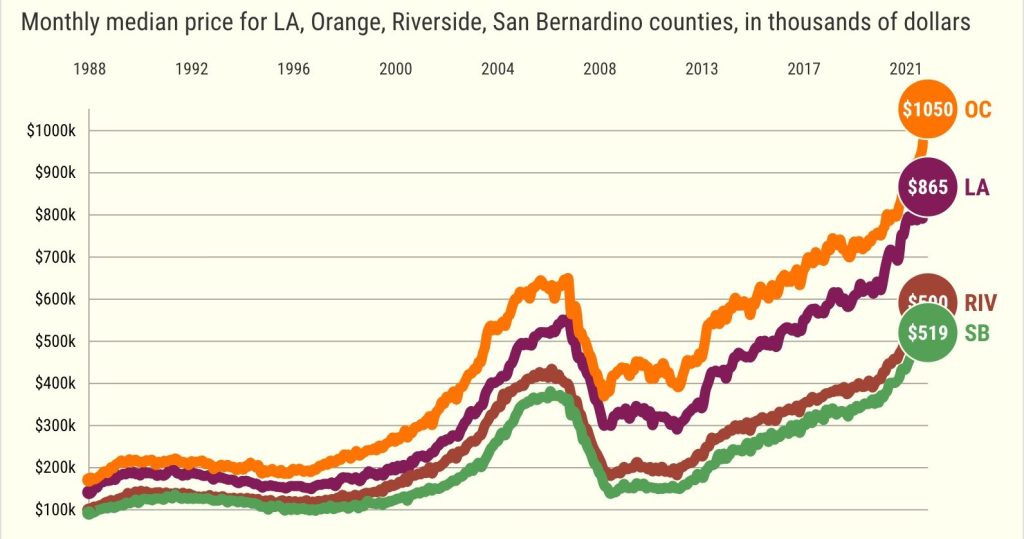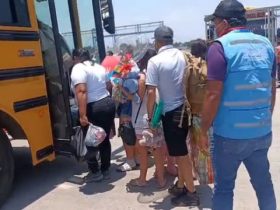Nestled in Southern California, San Bernardino is a city that found itself at the epicenter of one of the most challenging housing market crises in the state’s history. In this article, we delve into the factors that led to the crisis, its consequences, the city’s decision to file for bankruptcy, and the subsequent efforts to recover. San Bernardino’s story serves as a compelling case study on the consequences of speculative lending practices and the resilience of communities in the face of economic adversity.
The Housing Market Crisis in San Bernardino
San Bernardino’s housing market crisis was fueled by a combination of factors. Subprime lending practices, which involved offering high-risk mortgages to borrowers, played a pivotal role. These risky loans contributed to the bursting of the housing bubble, causing property values to plummet. As a result, many homeowners found themselves unable to repay their mortgages, leading to a surge in foreclosures. The city also witnessed a distressing increase in vacant homes, as families struggled to hold onto their properties.
The Municipal Bankruptcy
In 2012, San Bernardino made headlines for filing for municipal bankruptcy, a decision that marked one of the largest bankruptcies in U.S. history at the time. The city’s financial woes had reached a breaking point. It was grappling with insurmountable debt, pension obligations, and an inability to meet its financial obligations. The housing market crisis had taken a severe toll on the city’s finances, leading to this momentous decision.
Recovery Efforts
Following the bankruptcy filing, San Bernardino embarked on a challenging journey toward recovery. The city’s leaders and residents rallied to breathe new life into their community. Economic revitalization efforts were initiated to attract businesses, create jobs, and stimulate economic growth. Investments in infrastructure and public services were made to improve the overall quality of life.
One of the critical aspects of recovery was addressing the housing challenges that had plagued the city during the crisis. Various housing initiatives were launched to rehabilitate vacant properties, provide affordable housing options, and stabilize neighborhoods. These efforts have yielded progress in recent years, as San Bernardino continues to rebuild its economic and social fabric.
Lessons Learned
San Bernardino’s experience serves as a stark reminder of the risks associated with speculative lending practices and the far-reaching consequences of a housing market downturn. It underscores the importance of responsible lending and financial stewardship at both individual and institutional levels. Additionally, the city’s recovery demonstrates the resilience of communities when faced with adversity. It highlights the power of collaboration and determination in overcoming even the most daunting challenges.
Here’s a set of frequently asked questions (FAQ) based on the information provided about San Bernardino’s housing market crisis and recovery:
1. What caused the housing market crisis in San Bernardino?
- The housing market crisis in San Bernardino was primarily caused by subprime lending practices and the bursting of the housing bubble. These practices involved offering high-risk mortgages to borrowers, which ultimately led to a sharp decline in property values.
2. How did the housing crisis affect San Bernardino?
- The crisis had several significant consequences for San Bernardino, including a substantial drop in property values, a surge in foreclosures, and a notable increase in vacant homes. These factors had a detrimental impact on the city’s economic stability.
3. Why did San Bernardino file for bankruptcy in 2012?
- San Bernardino filed for bankruptcy in 2012 due to its dire financial situation. The city faced insurmountable debt, pension obligations, and an inability to meet its financial commitments, largely as a result of the housing market crisis.
4. What steps were taken to recover from the crisis?
- San Bernardino initiated various recovery efforts. Economic revitalization measures were implemented to attract businesses, create jobs, and stimulate growth. Additionally, the city focused on addressing housing challenges, rehabilitating vacant properties, and providing affordable housing options.
5. Did San Bernardino make progress in its recovery?
- Yes, San Bernardino has made progress in its recovery efforts in recent years. While challenges remain, the city has taken significant steps towards rebuilding its economic and social fabric.
6. What lessons can we learn from San Bernardino’s experience?
- San Bernardino’s experience underscores the risks associated with speculative lending practices and the far-reaching consequences of a housing market downturn. It emphasizes the importance of responsible lending and financial stewardship. The city’s recovery also highlights the resilience of communities when faced with adversity and the power of collaboration in overcoming challenges.
7. Is the impact of the housing crisis still felt in San Bernardino today?
- While progress has been made in recovery efforts, the impact of the housing crisis still lingers in San Bernardino to some extent. However, the city continues to work towards a brighter future, showing determination and resilience in the face of adversity.
8. How can other communities learn from San Bernardino’s experience?
- Other communities can learn from San Bernardino’s experience by prioritizing responsible lending practices, building economic resilience, and fostering community collaboration. San Bernardino’s journey serves as an inspiration and a lesson on how to recover from economic crises.
Conclusion
San Bernardino’s housing market crisis and subsequent recovery provide a valuable case study for understanding the dynamics of economic adversity and resilience. While the scars of the crisis still linger, the city has shown remarkable progress in rebuilding its future. It stands as a testament to the indomitable spirit of communities and their ability to bounce back from even the most challenging circumstances. San Bernardino’s journey serves as an inspiration and a lesson for us all, reminding us of the importance of prudent financial practices and the strength of community bonds in times of crisis.












Leave a Reply